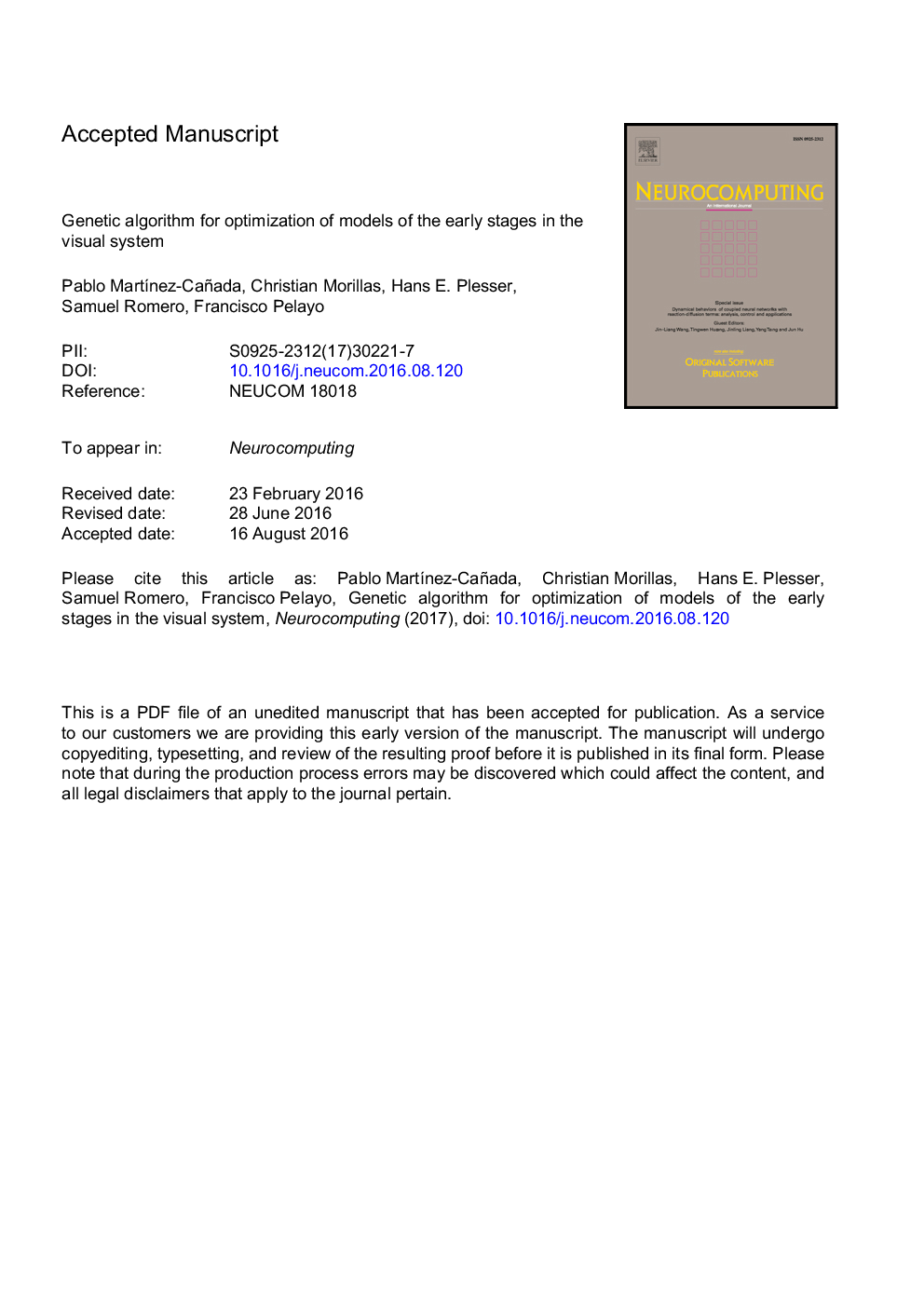| Article ID | Journal | Published Year | Pages | File Type |
|---|---|---|---|---|
| 4947313 | Neurocomputing | 2017 | 26 Pages |
Abstract
Automated parameter search methods are commonly used to optimize neuron models. A more challenging task is to fit models of neural systems since the model response is determined by both intrinsic properties of neurons and the neural wiring and architecture of the network. Neural records of cells in the visual system are often analyzed in terms of the cell's receptive field and its temporal response. This type of data requires a finer point-by-point comparison of response traces between the simulated output and the recorded data. To address these issues, we applied a genetic algorithm optimization in conjunction with a multiobjective fitness function and a population-based error metric. Two different models of the early stages in the visual system were fitted to electrophysiological recordings and results from a modeling study, respectively. The first one is a model of cone photoreceptors and horizontal cells that reproduces adaptation to the mean light intensity in the retina. A multiobjective fitness function based on the normalized root-mean-square error (NRMSE) and a shape error descriptor captures high-frequency oscillations in the impulse response to uniform white flashes. The second one is a large-scale model of the thalamocortical system that accounts for the slow rhythms observed during sleep. An error metric of the population neural activity is used in this case. We argue that the optimization framework proposed in this paper could serve as a useful tool for parameter fitting of neuron models and large-scale models in the visual system pathway.
Related Topics
Physical Sciences and Engineering
Computer Science
Artificial Intelligence
Authors
Pablo MartÃnez-Cañada, Christian Morillas, Hans E. Plesser, Samuel Romero, Francisco Pelayo,
